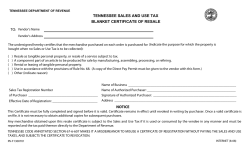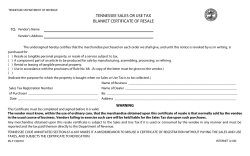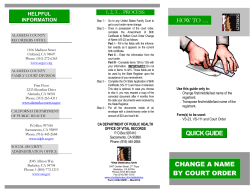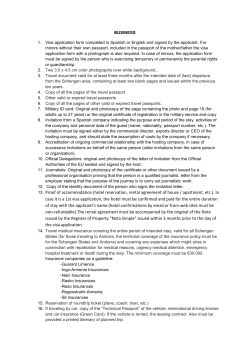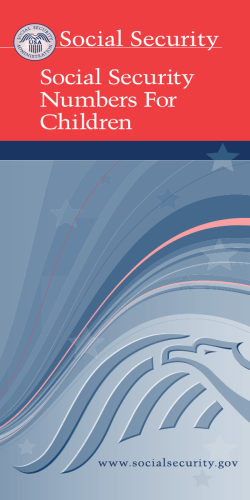
How to create and install a certificate
How to create and install a certificate signed with an external certificate authority on Juniper SRX firewall This document is to explain how to setup a certificate on a Juniper SRX firewall to provide a valid certificate when connecting to the HTTPS service. This is mainly to be used for DynamicVPN authentication portal. You will need to ensure that you have a configured Juniper SRX and that you can SSH and HTTP to the device. This document assumes that fe-0/0/0 is the externally facing interface and is assigned as untrust zone. SSH to the SRX Firewall and enter the CLI Please change the items in bold to match your requirements. SRX is an internal certificate name. It can be any name however you must make sure that you change all occurrences. Depending of the certificate authority you may need to change the size. However I recommend using the largest support size 2048. The mycert1 is an identifier. Please use a separate identifier for each separate certificate. The ca-identity mycert1 is an identity which is meant to represent your certificate authority. E.G. StartSSL, RapidSSL or even CompanyCA. The generate-certificate-request line is the most important thing to get correct. The certificateid SRX refers back to the key pair command and must be the same. The router.foo.com should be domain name is the domain of the certificate that will be created. admin@foo.com needs to be the certificate administrator for your company. This could be the network administrator. This email address may be used by the external certificate authority when creating a signed certificate. The ip-address should be an IP address on the SRX. I suggest using an internal LAN IP as this should not change very often. The subject line must be entered correctly DC=domain name of certificate CN=Common name aka FQHN of certificate OU= Organisation Unit. aka Company Name O= Owner L= Location ST=State C=Country. In the UK the country code is GB You cannot enter a space, so please use an underscore or hyphen. ©Copyright John Baker docs@ilikeit.co.uk www.ilikeit.co.uk SCRIPT for SRX to be run on CLI mode. You should see root@router> which will correspond to the username you logged in with and hostname of the SRX firewall. request security pki generate-key-pair certificate-id SRX size 2048 conf edit set security pki ca-profile SRX ca-identity mycert1 revocation-check disable crl disable ondownload-failure commit exit request security pki generate-certificate-request certificate-id SRX domain-name router.foo.com email admin@foo.com subject DC=foo.com,CN=router.foo.com,OU=LAB,O=MY_NAME,L=MARLBOROUGH,ST=WILTSHIRE,C=GB This should display a certificate something like -----BEGIN CERTIFICATE REQUEST----MIIDLDCCAhQCAQAwgZgxHTAbBgoJkiaJk/IsZAEZFg1pbGlrZWl0LmNvLnVrMR0wGwYDVQQDExRy23V0ZXIuaWxpa2VpdC 5jby51azEMMAoGA1UECxMDTEFCMRMwEQYDVQQKEwpKb2huX0Jha2VyMRQwEgYDVQQHEwtNYXJsYm9yb3VnaDESMBAGA1UE CBMJV2lsdHNoaXJlMQswCQYDVQQGEwJHQjCCASIwDQYJKoZIhvcNAQEBBQADggEPADCCAQoCggEBAK5o9aYrJRbUpXCrE5 V6MMNLXnbJfjzhLyVcrs57Fb0EmQcmiI7dM5au5kVl/rrI1cYM0ACC40h7KC5KNNCzqv2FZ9HX7Ilija377bGxcvxglZjG JW1uO0rovvnTu33Db8puHWRI4Oknol7j/ukZjOi/6qmgm4CPujVzIztzI46wzfRCULbZ+aWKKGq+12x0q85dCx1g6W019o DlGFk+yZszkjCEUnzRHIYqxKdWj5kqn2wWVjCrHJS6x98Js7H8s16LuKnM770aX5Cumh2hKqMjFOQ+v9vV9onYWiSuTt76 AbNq9JzB7wfFCi3YMnoKbfN/RjmrheIh2gGomqYxWJsCAwEAAaBOMEwGCSqGSIb3DQEJDjE/MD0wOwYDVR0RBDQwMoIUcm 91dGVyLmlsaWtlaXQuY28udWuBFCJqb2huQGlsaWtlaXQuY28udWsihwTAqP3+MA0GCSqGSIb3QQEBBQUBB4IBAQAdqXGd YoGxuvKb5jxojx0ofwlgc8RYhxsQt2lNM3INj70xLFR+D6IilazCemJ2K4z4vKheBK8IUavj+U60NrYDwIErXr1u30C246 bE28cgfn5jwTnjT79B3BxwVzlgNwWXP8YFED+7qywGej//1bmwpvJY0Rd1MlRvMZMJDNHar+jriANVPWlRnFS0fHRaAyK0 KR31T817qr1ALgLsAGWvyEfBJ6Ex7OZ27sGpzKBIRwGMVnYpEfdXmxmONwLx9YZCzgOICNPaFyH0UxNiw+9I6Pnr74miZg oAeJcOfvxnRdg4KQ4cHmysmbxZu2ZfAJaA34alGvBivfScp2u3OEdl -----END CERTIFICATE REQUEST----- You will need to copy your generate certificate request list like the above. Save this file as SRX.CRT.REQUEST as you will need this if you ever need it reinstall the certificate. Although it is better to reissue the certificate. You will now need to use a certificate authority, external or your own company, to create a signed certificate from the certificate request file you just generated. When you have used a certificate authority to create a signed certificate you should see something like: This should display a certificate something like -----BEGIN CERTIFICATE----MIIE4TCCA8WgAwIBAgIDAMD8MA0GCSqGSIb3DQEBBQUAMDwxCzAJBgNVBAYTAlVTMRcwFQYDVQQKEw5HZW9UcnVzdCwgSW 5jLjEUMBIGA1UEAxMLUmFwaWRTU0wgQ0EwHhcNMTEwMjIwMDQyNjMzWhcNMTEwODExMTYzMzQzWjCB7zEpMCcGA1UEBRMg bXdmQzE0cGk0VHVEMG41R21nUHpKNmRrWmJFcy1jeU4xCzAJBgNVBAYTAkdCMR0wGwYDVQQKExRyb3V0ZXIuaWxpa2VpdC 5jby51azETMBEGA1UECxMKR1Q1NTM5NTY0ODExMC8GA1UECxMoU2VlIHd3dy5yYXBpZHNzbC5jb20vcmVzb3VyY2VzL2Nw cyAoYykwODEvMC0GA1UECxMmRG9tYWluIENvbnRyb2wgVmFsaWRhdGVkIC0gUmFwaWRTU0woUikxHTAbBgNVBAMTFHJvdX Rlci5pbGlrZWl0LmAvLnVrMIIBIjANBgkqhkiG9w0BAQEFAAOCAQ8AMIIBCgKCAQEArmj1pislFtSlcKsTlXoww0tedsl+ POEvJVyuznsVvQSZByaIjt0zlq7mRWX+usj7xgzQAILjSHsoLko00LOq/YVn0dfsiWKNrfvtsbFy/GCVmMYlbW47Sui++d O7fcNvym4dZEjg6SeiXuP+6RmM6L/qqa7bgI+6NXMjO3MjjrDN9EJQttn5pYooar7XbHSrzl0LHWDpbTX2gOUYWT7JmzOS MIRSfNEchirEp1aPmSqfbBZWMKsclLrH3wmzsfyzXou4qczvvRpfkK6aHaEqoyMU5D6/29X2idhaJK5O3voBs2r0nMHvB8 UKLdgyegpt839GOauF4iHaAaiapjFYmwIDAQABo4IBMjCCAS4wHwYDVR0jBBgwFoAUa2k9ahhCSt2PAmU5/TUkhniRFjAw DgYDVR0PAQH/BAQDAgWgMB0GA1UdJQQWMBQGCCsGAQUFBwMBBggrBgEFBQcDAjAfBgNVHREEGDAWghRyb3V0ZXIuaWxpa2 VpdC5jby51azBDBgNVHR8EPDA6MDigNqA0hjJodHRwOi8vcmFwaWRzc2wtY3JsLmdlb3RydXN0LmNvbS9jcmxzL3JhcGlk c3NsLmNybDAdBgNVHQ4EFgQUkj9Z3h152hcD3BWf0n1sRyowH+gwDAYDVR0TAQH/BAIwADBJBggrBgEFBQcBAQQ9MDswOQ YIKwYBBQUHMAKGLWh0dHA6Ly9yYXBpZHNzbC1haWEuZ2VvdHJ1c3QuY29tL3JhcGlkc3NsLmNydDANBgkqhkiG9w0BAQUF AAOCAQEAbXI6ku7resjvs9KQh/5FQSuvL2gGUxmlgrpXpXHGm23yUQE89dcFXciOsjuwaF4OjBxT1U3o4atBuml2dHF1+7 4X8NL0TSgRJJsg2u1LCJVrh82FilhZILHS1tnaR1/FVKPNcXngxcEue7t5fT6KWpgIPOfWtrNf/Gw/oVF2wbnyaSgJ77u6 Lbu0JlxnRz4ObZBh+Okv08hgn0vbOVcuLZp/2gJY7FjW/AOJQgVdm3jhZlliFrOWNQGWpkfRz4dbfIRS4wJ4/pc+tsAsmK mZFlGwRX1aC6oEQFZA6IuVSJRIEt4TLJXkZT4lQAtrCexXQsQc+C/E0a4I6++Q95AQNQ== -----END CERTIFICATE----- ©Copyright John Baker docs@ilikeit.co.uk www.ilikeit.co.uk Please save this as SRX.CRT SSH onto SRX but do not go to the cli. You should see root@router% which will correspond to the username you logged in with and hostname of the SRX firewall. cd /tmp vi SRX.crt press insert key and then paste the text from SRX.CRT Then press the ESC key and type :w This will save the file. Then press the ESC key and type :x This will exit from the text editor (vi) Go to the cli. Please make sure that the srx100 match the earlier values. You should see root@router> which will correspond to the username you logged in with and hostname of the SRX firewall. request security pki local-certificate load certificate-id SRX filename /tmp/SRX.crt request security pki ca-certificate load ca-profile SRX filename /tmp/SRX.crt You will need to enter conf mode The following will setup your installed certificate on fe-0/0/0.0 You need to assign this to the externally facing interface. The interface should be set to accept HTTPS. You should see root@router# which will correspond to the username that you logged in with and hostname of the SRX firewall. set security zones security-zone untrust interfaces fe-0/0/0.0 host-inbound-traffic systemservices https set system services web-management https pki-local-certificate SRX interface fe-0/0/0.0 You should now be able to login to the HTTPS interface and get a valid cert If you make a mistake and want to clear the certificate and key pairs, please use this clear clear clear clear clear security security security security security pki pki pki pki pki key-pair certificate-id SRX local-certificate certificate-id SRX key-pair certificate-id SRX ca-certificate ca-profile SRX certificate-request certificate-id SRX ©Copyright John Baker docs@ilikeit.co.uk www.ilikeit.co.uk
© Copyright 2025

